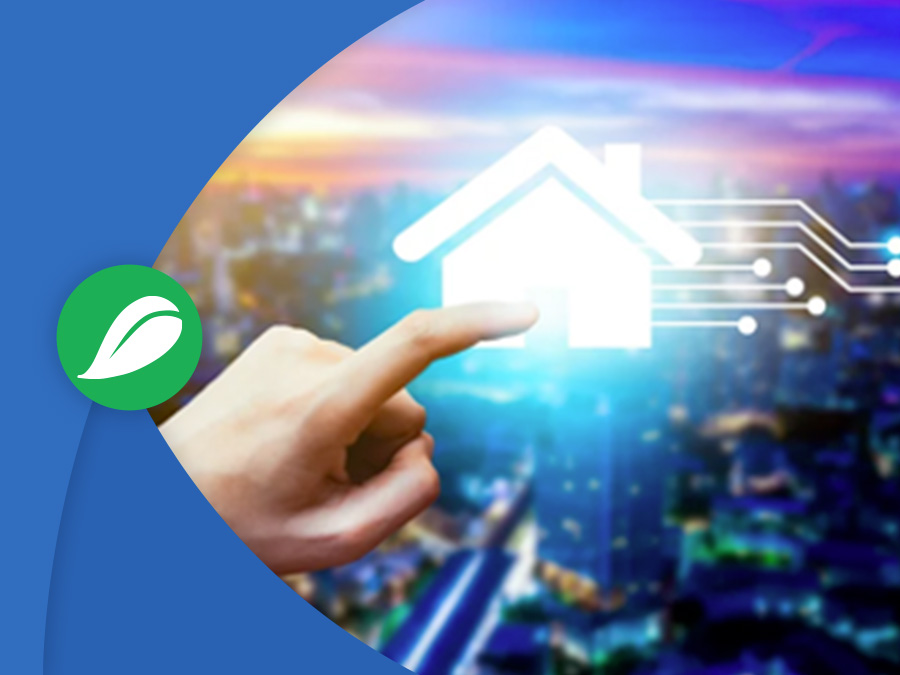A significant contribution to the energy efficiency of technological systems and industrial processes is provided by monitoring, management, and supervision systems for energy consumption.
In the civil sector, remote monitoring and control systems are a response to the growing need for new, reliable, effective, and cost-efficient solutions.
In every building, the heat generator produces and transfers more thermal energy to the heat transfer fluid than the actual need of the spaces.
These intelligently conducted systems allow for the reduction of energy overproduction by producing only the required amount.
Remote monitoring and control systems have become the only tools capable of guaranteeing Energy Performance Contracts (EPC), reducing the management and maintenance costs of thermal systems, and making the energy savings resulting from implemented measures simple and transparent.
They enable real-time control of various technological systems located in different places, centralizing all information on their operation, enhancing control, data processing, and the calibration of individual devices.
In the past, conducting predictive maintenance was difficult and costly, but today, it is possible to ensure the correct functioning of systems by preventing any type of failure.
The peripheral units of a remote monitoring and control system consist of a set of digital devices that form the core structure of the system.
Each peripheral unit is connected to the central station, with each device equipped with a microprocessor that holds all the necessary functions for the regulation and control of the system.
Functions
Possible functions include:
- Control and regulation of central heating systems
- Control and regulation of sub-centers in district heating systems
- Control and regulation of hotels or commercial complexes
- Control and regulation of air conditioning systems
- Control and management of hydraulic systems
- Energy metering for heating, cooling, and domestic hot water
- Control and regulation of electrical systems
- Acquisition of statuses, alarms, and counts
Furthermore, energy management can also be achieved through an innovative predictive weather system, which eliminates unnecessary operating hours for heating systems, reducing energy waste before it occurs. The system can be installed on individual generators, central heating systems, secondary circuits, solar systems, individual room air conditioning units, and dehumidifiers. Its functions include regulation, energy monitoring, consumption analysis, and control of system inefficiencies.
In the industrial and tertiary sectors the design and installation of electronic control systems are necessary to predict the timing and methods of industrial process verification and to modify, block, or reset the "physical" management of machines.
Monitoring allows for real-time consumption monitoring, including passive consumption.
Data analysis enables the planning and management of energy efficiency measures in both the design and operational phases and the monitoring of their actual effectiveness.
Energy monitoring allows for the control of the correct power factor of the system, the proper functioning of equipment, and maintaining power factor values according to the applicable regulations, thus avoiding penalties established by Resolution 180/2013/R/EEL.
Electronic control systems represent an important technological innovation in these sectors. Electronic regulation, with its high number of variables to control and manage, has allowed for the optimization of processing and production times, resulting in significant energy savings.
Analysis
Monitoring systems enable increasingly complex and specific consumption analyses, including:
- Precise allocation of consumption to individual cost centers
- Continuous monitoring of the energy system's consumption status
- Identification of waste and its root causes
- Availability of data for proper sizing and consumption reduction
- Verification of energy savings resulting from implemented measures
- Management of multiple customers and their channels in an aggregated and continuous manner
- Conducting cross-sectional comparisons and analyses between different customers
- Acquisition of data of various natures useful for both customers and more in-depth analysis
- Support for the customer in managing the energy of their facility by providing periodic reports
- Faster data analysis times
- Early identification of waste and anomalies
- Verification of energy savings resulting from implemented measures
These systems achieve their great potential through communication between the control station and peripheral units, using analog modems, standard phone lines, ISDN lines, GSM, UMTS, and GPRS networks.
The use of the TCP/IP protocol allows for the use of various communication vectors, such as LAN, Ethernet, or the Internet, and the sharing of information on cloud platforms.

